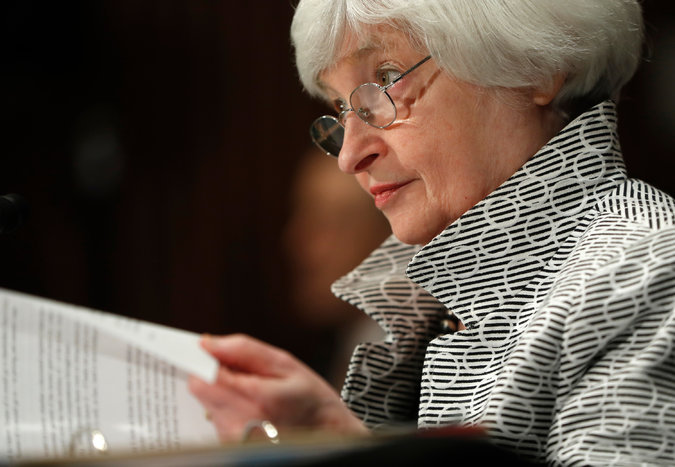But the weakness of inflation, which the Fed now expects to remain below its target annual pace of 2 percent for the fifth-consecutive year, is prompting some Fed officials to hesitate.
Most Fed officials subscribe to a view of inflation in which prices rise more quickly as unemployment declines. The basic idea is that companies must offer higher and higher wages to keep their workers.
Now, the Fed is confronting “the coexistence of low inflation and low unemployment,” a phenomenon that inverts the “stagflation” experience of the 1970s, when both inflation and unemployment climbed.
The meeting account said most officials continued to regard low unemployment as the most important factor. They said inflation was rising slowly because of temporary factors, like a decline in cellphone service prices. And they remain inclined to raise the Fed’s benchmark rate later this year.

But as low inflation persists, alternative theories have blossomed. Some Fed officials see evidence that the low unemployment rate overstates the health of the job market, and therefore that the Fed should wait to raise interest rates. Low rates support job growth by encouraging borrowing and risk-taking.
Others see evidence that the connection between unemployment and inflation has been overstated.
Some Fed officials have suggested that the public is losing confidence that the Fed will raise inflation back to a 2 percent annual pace, which could make it harder for the Fed to do so, because inflation expectations can become self-fulfilling.
Newsletter Sign Up
Continue reading the main story
Thank you for subscribing.
An error has occurred. Please try again later.
You are already subscribed to this email.
The account said some voting members of the Fed’s policy arm, the Federal Open Market Committee, wanted reassurance that inflation was rising before voting to raise rates again.
The slow pace of wage growth is driving a parallel debate. Wages have increased modestly in recent years, and the minutes noted again there was “little evidence of wage pressures.”
Advertisement
Continue reading the main story
Some officials see further confirmation that the economy is weak.
Others, however, see the data as misleading. One possibility, advanced by the Federal Reserve Bank of San Francisco, is that aggregate wage measures remain low because the baby boomers are retiring. In this view, older, high-wage workers are being replaced by younger workers who make less simply because they are at an earlier stage in their careers. That is holding down measures of average wages, but individual workers may still be seeing healthier wage growth.
And there are also those who contend that wage growth is doing about as well as one would expect given the slow growth of productivity.
Fed officials continue to retreat from the expectation that the Trump administration will deliver a large dose of fiscal stimulus, whether in tax cuts or increased infrastructure spending. The Fed reported that companies, too, are losing hope.
“Uncertainty about the course of federal government policy, including in the areas of fiscal policy, trade and health care, was tending to weigh down firms’ spending and hiring plans,” the minutes said.
The Fed also included in the minutes a warning about the Trump administration’s plans to reduce what it regards as overly burdensome financial regulation.
“It would not be desirable,” the minutes said, “for the current regulatory framework to be changed in ways that allowed a re-emergence of the types of risky practices that contributed to the crisis.”
Continue reading the main story
Article source: https://www.nytimes.com/2017/08/16/business/economy/federal-reserve-minutes.html?partner=rss&emc=rss
Speak Your Mind
You must be logged in to post a comment.